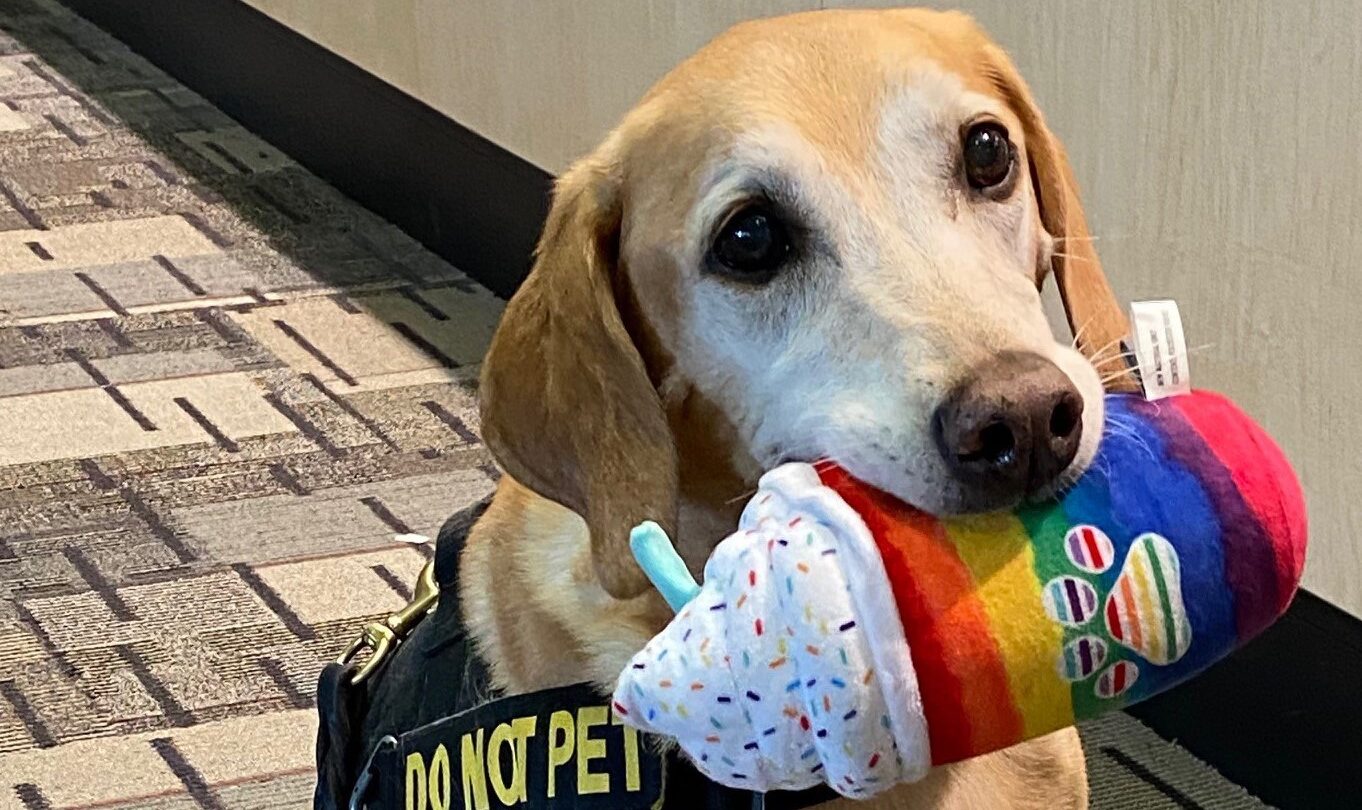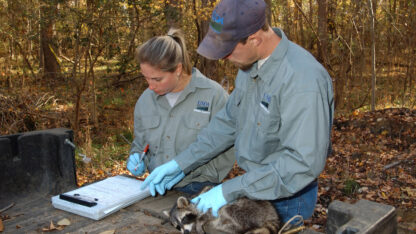A Transportation Security Administration K9 named Eebbers has retired after nearly a decade of service, during which he earned the distinction of being the agency’s oldest working bomb-sniffing dog, as well as its cutest.
This is an objective fact (though it’s also true that every dog is the best dog): Eebbers won the TSA’s “2022 Cutest Canine Contest” in August, shortly before he celebrated his retirement with a treat-laden sendoff at his home base of Minneapolis-St.Paul International Airport (MSP).
The 11-year-old vizsla-Labrador mix was born into TSA’s Puppy Program at Lackland Air Force Base in Texas and, at the time of his retirement, was the last remaining Puppy Program canine still working daily for the agency. He was named after U.S. Army Pvt. James Ebbers, who died at age 19 in Djibouti, Africa in 2002 while assigned to the 551st Military Police Company (based at Fort Campbell, Kentucky.).
In addition to his work sniffing for explosives as a passenger screening canine at MSP, Eebbers also helped with security at major sporting events including two Super Bowls, the Indianapolis 500, an NCAA National Championship football game and the Special Olympics World Games. And he also makes time for fun.
“He stays very active every day, even during the cold Minnesota winters, and he loves swimming in any of Minnesota’s 10,000 lakes in the summer,” according to TSA.
Passenger screening canines like Eebbers are trained to detect the scent of explosives or explosive materials among travelers, typically in security checkpoint lines, and alert their handlers if they sniff something suspicious. They are tested regularly to make sure they are fit for service in busy airports — and while they are sociable, the agency says, they are working dogs who should only be touched and fed by their handlers.
“His ability to search out his trained odors amazes me every day,” Jean Carney, Eebbers’ handler and lifelong partner, told Minnesota’s Star Tribune.
She described him as smart, gentle and polite, adding that he’d be waiting at the stairs at 3:30 a.m., ready to go to work.
Most dogs retire when they’re 7 or 8 years old due to the demands of the high-pressure job, according to Carney, who is also retiring. She said she wanted Eebbers to “enjoy his last few years just being a dog.”
“It’s inevitable he was going to come to a point where he was going to start slowing down, and maybe start not being as proficient as he was when he was younger,” she said, according to CBS affiliate KENS5. “I didn’t want him to go out on a low note.”
That was definitely not the case. Last month Eebbers clinched the title of TSA’s cutest canine in a nationwide social media contest, in which he was chosen by public vote from among four finalists (narrowed down by TSA employees from a field of nearly 100).
Days later, he and Carney celebrated their last day at work, with some special surprises.
Eebbers’ “do not pet” vest was replaced with a standard collar and leash, meaning he could finally get scratchies from his colleagues and admirers. He was showered with stuffed toys and celebrated with several bomb-shaped cakes, and both he and Carney received commemorative plaques.
“It was the pinnacle of what we’ve worked for for all of these years. Just to let him be the dog that he deserves to be,” Carney told KENS5. “He’s worked so hard all of these years. He’s been so dedicated, and such a hard worker, and the only thing he asked is [for] that toy.”
So what does post-retirement bliss hold in store for Eebbers? First things first, according to Carney, a swim in Iowa’s Lake Okoboji and a long walk with his sister Etti (who herself is retired from the FBI).
Eebbers and his fans have much else to look forward to. Later this year, for instance, TSA will announce the availability of its 2023 Canine Calendar — which will feature Eebbers on the cover.
Copyright 2022 NPR. To see more, visit https://www.npr.org.
9(MDAxODM0MDY4MDEyMTY4NDA3MzI3YjkzMw004))

9(MDAxODM0MDY4MDEyMTY4NDA3MzI3YjkzMw004))







